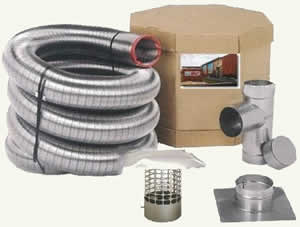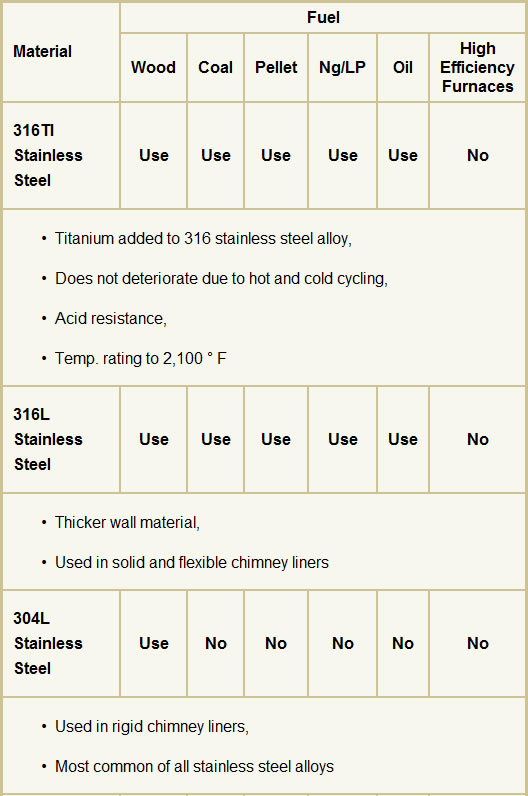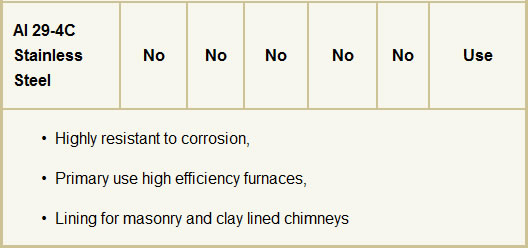
Figure 1 - Chimney liner kit
Today’s metal chimney liners are all made of different types of alloys of stainless steel. Stainless steel is a generic name for any steel alloy that has been combined with at least 10.5 percent of chromium. To go to a store and ask to buy a stainless steel chimney insert does not define what you want as there are numerous alloy compositions of stainless steel and each has unique properties. Certain stainless steel alloys are better chimney liners for specific types of appliances and the fuels that they burn.
Generically stainless steel makes an excellent chimney liner as it inherently does not corrode, rust or stain and does not lose its mechanical properties at high temperatures. Stainless steel chimney liners are easy to maintain and will provide service for many years without the need for replacement.
Chimney liners are subjected to high heat and hot and cold cycling. As well they must withstand the acids that are commonly found in the heated gases that are expelled from the heating appliance. In the case of high efficiency furnaces moisture is also present in the exhausted gases.
Although the differences in the stainless steels that are used for chimney liners are subtle, it is an important safety issue that you choose the stainless steel chimney liner that has been designed for your application. Table 1 defines the chimney liner material, the fuels that can be used for a specific liner and comments about the application.
Table 1 - Chimney Liner Materials, Fuels & Applications


